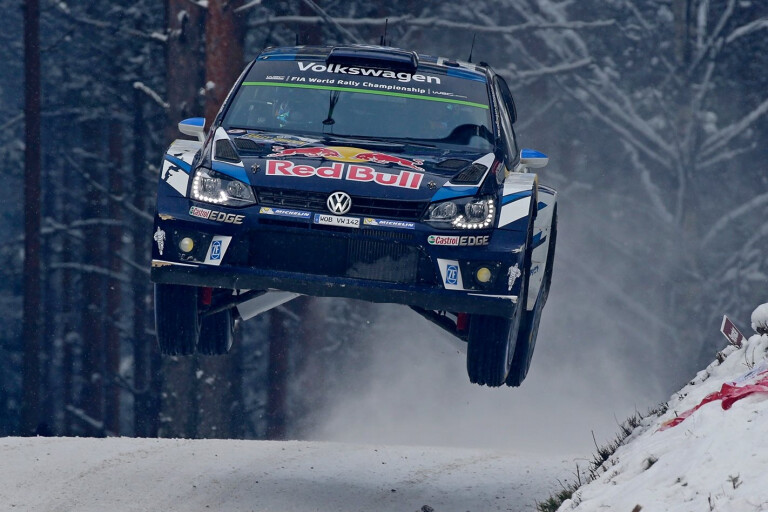
WRC: Ogier on top in controversial Rally Sweden
THE only truly winter rally on the calendar started badly with a threat by leading drivers to boycott the opening stage of Rally Sweden, the second round of the 2016 FIA World Rally Championship.
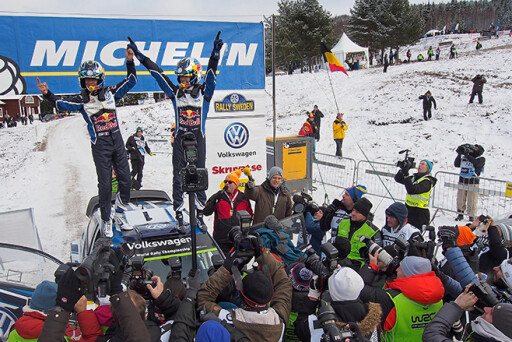 Their dissatisfaction was due to a dearth of that desirable weather-related element a decent snow cover. The drivers were unhappy because of safety issues related to competing on snow tyres in sub-optimal conditions.
Their dissatisfaction was due to a dearth of that desirable weather-related element a decent snow cover. The drivers were unhappy because of safety issues related to competing on snow tyres in sub-optimal conditions.
Ultimately, the Sebastien Ogier-led boycott threat collapsed on Friday morning because of the absence of unanimity among the WRC drivers. Hyundai’s Hayden Paddon broke with his fellow drivers, on directions from his team.
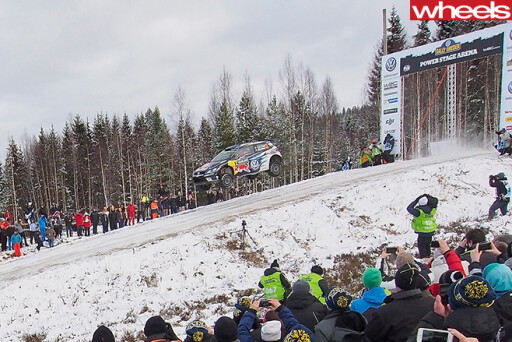 "The other drivers wanted a commitment at six o'clock and I wasn't prepared to risk my job at six in the morning,” the New Zealander told Autosport.
"The other drivers wanted a commitment at six o'clock and I wasn't prepared to risk my job at six in the morning,” the New Zealander told Autosport.
"Of course, I agree with the principle of what we're debating and I think the drivers should be involved in that process, but if you're going to make a protest, then you have to actually threaten on what you're going to do and then you do it.
"You can't really do it by just boycotting a stage.
 "My opinion is that this was about more than just us drivers. We're dealing with organisers who are really struggling here, and there were a lot of spectators who had paid their money to get in there."
"My opinion is that this was about more than just us drivers. We're dealing with organisers who are really struggling here, and there were a lot of spectators who had paid their money to get in there."
Paddon’s decision looked increasingly like a smart one when the rally area immediately copped a decent dump of snow. The Kiwi went on to turn in a white-hot performance over the three days, clinching second place in Rally Sweden.
It was the second consecutive podium for the latest generation i20 WRC, which made its rally debut at Rally Monte-Carlo only last month.
 The podium for Paddon – his second in the WRC – has added to the impression that the Kiwi is a growing world championship contender.
The podium for Paddon – his second in the WRC – has added to the impression that the Kiwi is a growing world championship contender.
But the driver Paddon is aiming at, the imperious three-times champ Ogier, remains the standard by which others are measured. In Sweden, Ogier and co-driver Julien Ingrassia took their third success in four years at this classic rally, and their 34th in total.
The road to victory this time demanded a herculean effort from the French superstar combo. The duo overcame the challenge of being first on the stages covered with a layer of fresh snow, which left their Volkswagen Polo sweeping the road clear for the following cars.
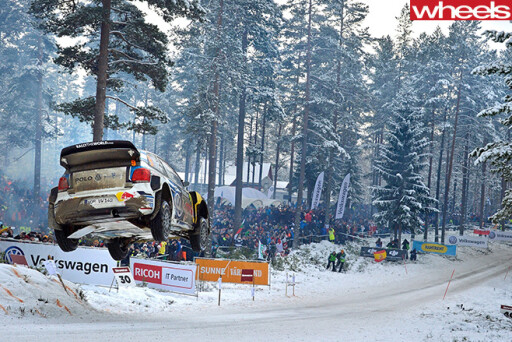 From a more favourable starting slot, Paddon closed to within less than nine seconds of Ogier on Saturday. But the Frenchman sealed the win on the final day, winning by 29.8 secs.
From a more favourable starting slot, Paddon closed to within less than nine seconds of Ogier on Saturday. But the Frenchman sealed the win on the final day, winning by 29.8 secs.
Paddon and co-driver John Kennard had to deal with a late drama. Their i20 suffered a radiator leak after hitting a wooden post during the final stage, the pair carrying out repairs before nursing the car back to service.
The Ford Fiesta of Norway’s Mads Østberg/Ola Fløene was third.
F1: Louder cars in 2016
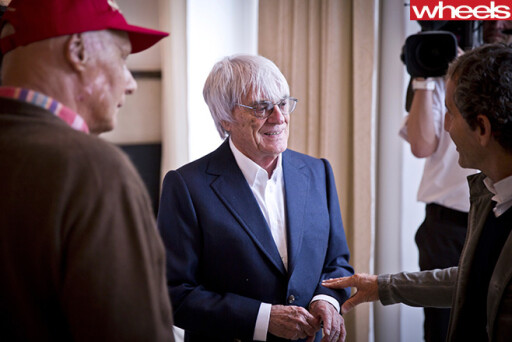 LONG-TIME fans of Formula One who have missed the traditional ear-splitting scream of grand prix cars following the introduction of the current V6 turbo hybrid power units in 2014 should welcome news that the engines will be as much as 25 per cent louder this year, when the 2016 season roars into life in Melbourne next month.
LONG-TIME fans of Formula One who have missed the traditional ear-splitting scream of grand prix cars following the introduction of the current V6 turbo hybrid power units in 2014 should welcome news that the engines will be as much as 25 per cent louder this year, when the 2016 season roars into life in Melbourne next month.
This is a reaction to widespread complaints – including harsh criticism from F1 commercial boss Bernie Ecclestone – about the muted sounds of engines used in 2014 and 2015.
“It’s going to be quite a significant increase… up to 25 per cent louder,” according to the technical boss of Williams F1, Pat Symonds. “And it will get louder during the season.”
The call from Ecclestone and fans from around the world to bring back the evocative tailpipe sounds of the past has been answered, says Symonds, by a decision to revise the exhaust systems.
The cars’ waste-gates have been revised by creating a separate tailpipe from the main exhaust. The exhaust sound will be up by about one and a half decibels.
Symonds says our ears will notice the greater noise. It will be up around 14 percent when the waste-gate is closed, but when it is open it will be 20 to 25 percent louder.
He said the cars would also become louder as the season unfolded and the engines were developed.
“This is a natural progression,” he said. “A lot of the sound is a function of the cylinder pressure. So the higher the cylinder pressure, the more sound that’s coming out.
“And as the engines are developed, the way you get the power is to get the cylinder pressures up — and we’ve seen some quite significant increases since the beginning of 2014 in the cylinder pressures we’re running.”
POLL POSITION: Whincup rated best in the world
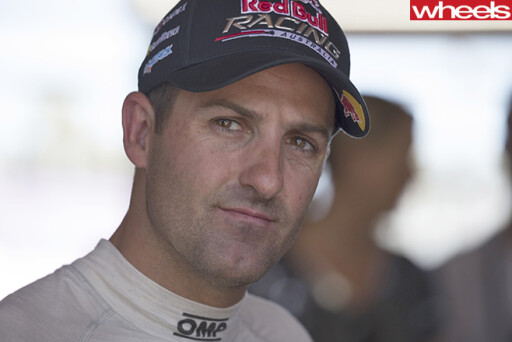 IT PROBABLY isn’t the definitive poll on the current touring car scene. But it did place Australia’s Jamie Whincup at number one. And it’s worthy of contemplation and analysis
IT PROBABLY isn’t the definitive poll on the current touring car scene. But it did place Australia’s Jamie Whincup at number one. And it’s worthy of contemplation and analysis
An elite panel of eight worthy souls from website Motorsport.com’s editorial team has come up with a list of the top 10 touring car drivers in the world right now.
The panel consisted of a broad cross section of (mainly) journalists of different nationalities - Charles Bradley, Editor-in-Chief; Andrew van Leeuwen, Australian Editor; David Malsher, US Editor; Jamie Klein, UK Editor; Stefan Ziegler, German Editor; Nick de Groot, News Editor, US; Valentin Khorounzhiy, Editorial Assistant; and David Addison, Special Contributor.
The criteria used was to base the drivers on recent form, considering the relative competitiveness of their respective series.
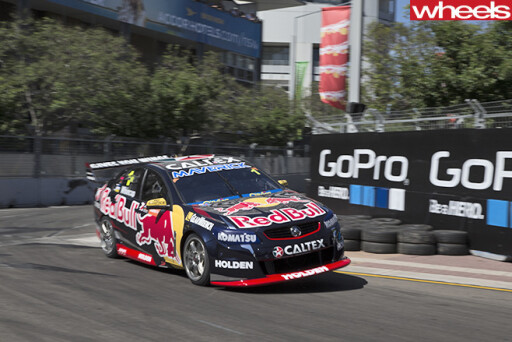 The chosen 10 won’t be blessed with a rousing universal endorsement from readers everywhere – nor, for that matter, from motor sports writers outside the panel. But certain to be well received in Australasia is the panel’s call to include four regular V8 Supercars drivers.
The chosen 10 won’t be blessed with a rousing universal endorsement from readers everywhere – nor, for that matter, from motor sports writers outside the panel. But certain to be well received in Australasia is the panel’s call to include four regular V8 Supercars drivers.
Some Brits will question Jason Plato’s inclusion ahead of the highly rated Gordon Shedden.
Two German DTM stars made the 10 - Jamie Green at five and Mattias Ekstrom (whom we’ve seen and appreciated at Bathurst) coming in equal second. No argument from me.
The relatively soft competitiveness of the World Touring Car Championship, a series barely on our radar Down Under, raises questions over the presence of three WTCC regulars in the top 10. All three are terrific drivers –but… aw, I’d be more comfortable if Jose Maria Lopez had kicked serious butt in another hot championship.
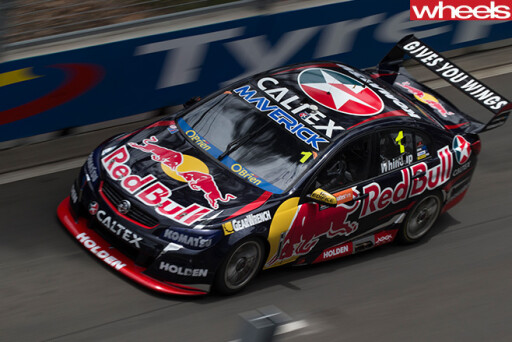 Jamie Whincup, for the past eight years THE standout of arguably the most competitive tin-top series this side of NASCAR, came in at #1. No debate required. Move on.
Jamie Whincup, for the past eight years THE standout of arguably the most competitive tin-top series this side of NASCAR, came in at #1. No debate required. Move on.
Craig Lowndes hasn’t won a championship since 1999 but was runner-up last year, and is still very quick and a regular winner of races, including the Bathurst 1000 in 2015.
As reigning Supercars champion, and the holder of a consistent body of work for many years, Mark Winterbottom deserves his place in the 10.
Kiwis are howling that Shane van Gisbergen deserves a higher slot than 10th. But his record doesn’t put him higher than Frosty, does it? The poll criteria didn’t include a flamboyance factor.
TOP 10
1. Jamie Whincup, V8 Supercars, Red Bull Racing Australia
2. Jose Maria Lopez, World Touring Car Championship, Citroen Racing
2. Mattias Ekstrom, DTM, Audi Sport Team Abt
4. Yvan Muller, World Touring Car Championship, Citroen Racing
5. Jamie Green DTM, Audi Sport Team Abt
6. Jason Plato, British Touring Car Championship, Team BMR
7. Craig Lowndes, V8 Supercars, Triple Eight Race Engineering
8. Rob Huff, World Touring Car Championship, Honda Racing
9. Mark Winterbottom, V8 Supercars, Prodrive Racing Australia
10. Shane van Gisbergen, V8 Supercars, Red Bull Racing Australia
F1: Bring back the brutes!
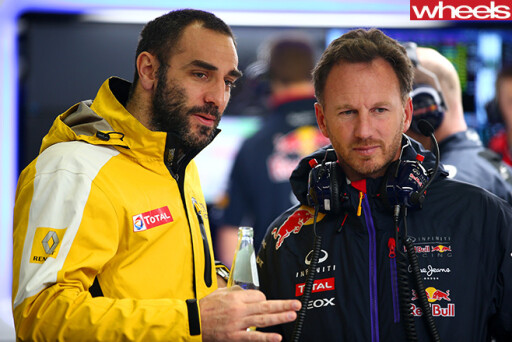 RENAULT boss Cyril Abiteboul has been bluntly urging F1’s rule makers to push ahead with fresh regulations making the sport more extreme in 2017.
RENAULT boss Cyril Abiteboul has been bluntly urging F1’s rule makers to push ahead with fresh regulations making the sport more extreme in 2017.
Hooray! How good it would be if the teams and the FIA could agree on proposals to make the cars less like moving gamer consoles and more like the hard-to-tame F1 brutes of the golden era.
Abiteboul believes F1 should have strong differentiation from other categories of motor sport, and should distance itself from fuel saving and tyre saving – which he says are the preserve of endurance racing.
He added that endurance sports car racing should be all about fuel efficiency and technology, while F1 must be about drivers attacking constantly and driving flat out: the fastest drivers in the fastest cars.
Plans to make the F1 cars significantly faster by 2017 have been tossed around for months. Initially there were quite delectable plans to make the cars about five-seconds a lap quicker than today’s machines, thanks to a raft of regulation changes based around aerodynamics and way more downforce, and wider tyres. Specifically the FIA agreed a couple of months ago upon a track widened from 1800mm to 2000mm, wider Pirellis, revised shape and size of the front and rear wings, greater aerodynamic downforce from the wider bodywork, and a redesigned underfloor.
Pirelli advised that the current tyres – manufactured quite deliberately under instruction so as not to last the course of a grand prix – would not stand up to the proposed increase in cornering forces unless they were made way more durable, and slower as a consequence. Five seconds a lap has been revised to three seconds…
The F1 Strategy Group – Ferrari, Red Bull, Mercedes, Williams, McLaren and Force India – is under pressure to produce a final set of proposals. Abiteboul has challenged the six teams to orchestrate a major shake-up of the regulations.
The Renault man’s chances of satisfaction are not high. Self-interest among the key teams is likely to take precedence over the future health of the sport.
F1: Record 21 races will stretch teams
BERNIE Ecclestone will be pleased by the prospect of raking in the commercial dollars in an unprecedented grand prix world championship season of 21 races. They have been jammed into a season starting in Australia on March 18-20, and wrapping in Abu Dhabi on November 25-27. More races bring more income, greater media coverage, bigger television audiences…
The 2016 campaign will be the busiest than any other in F1 history, surpassing the previous benchmark of 20 races during 2012.
The expanded calendar features one new race - in Baku, Azerbaijan on June 17-19 - and the return of a grand prix in Germany, with Hockenheim hosting the race.
The 2016 calendar also includes back-to-back weekends on six occasions: Canada and Baku, Austria and Great Britain, Hungary and Germany, Belgium and Italy, Malaysia and Japan, and the USA and Mexico will all be held on respective consecutive weekends. The USA’s slot remains provisional.
And with an enervating 21-race season in prospect, some teams are contemplating using a rotation system for engineers and mechanics so they get sufficient rest.
World champions Mercedes are giving this serious thought.
Mercedes team chief Toto Wolff has spoken of the need to take care of his valuable human resources, acknowledging that with 19 races, he’s seen the team personnel stretched to mental and physical limits.
There have been suggestions of a rotating squad but this brings the problem of not always having the very best people at grands prix.

COMMENTS